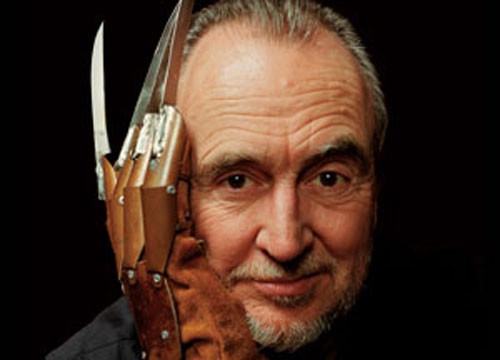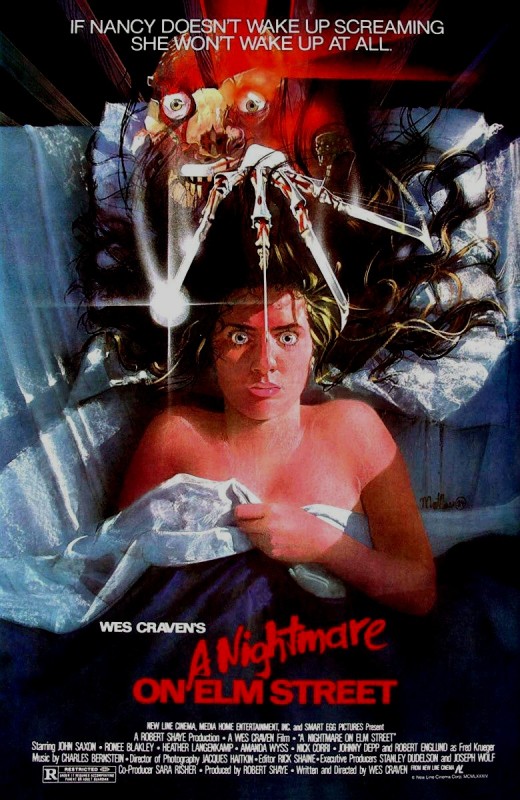By James Hancock August 31st, 2015
Long before I began to hero worship filmmakers or even knew what a director was, I was in love with the work of Wes Craven. As a child growing up in the 1980s I was obsessed with horror films and for a long time my older brother and I had been hearing rumors about something called A Nightmare on Elm Street. With no ability to drive or to gather information of any kind, the only way I got to see anything in the horror genre at that time was if an open-minded adult was willing to turn me loose inside a video store or if I got lucky with whatever happened to be on HBO. Back then there was a much longer delay between the theatrical release of a film and when it played on cable, but I vividly remember watching HBO one night at the tender age of 10 when Robert Englund, in full Freddy Krueger makeup and costume, appeared on the screen to announce that the next movie on the schedule that night was going to be A Nightmare on Elm Street. I was sitting too close to the screen at the time and I remember laughing/squealing as a leaped back from the television. My brother and I shared a conspiratorial look, turned off the lights and got prepared to watch the flick. 90 minutes later, we stumbled outside the house into the dark to walk our dog (there was no way either one of us would go alone), and I can still vividly recall what felt like an ominous electric charge humming through my arms and fingers. I had experienced a level of fear I did not know existed and I essentially remained in a state of alarm for weeks. I experienced some incredibly vivid nightmares of my own and I would lurch in fright at the slightest unexpected sound such as a cassette abruptly stopping on my stereo when it had reached the end of its side. The fear gradually evolved into obsession and before long my walls were covered in posters of Freddy Krueger, I had designed my own glove using straws and tin foil, and I got to the point where I had seen the movie so many times I could watch it in my head from start to finish in my imaginary screening room. I was not alone and Freddy Krueger rapidly became the biggest celebrity of the 1980s or at least that was how it seemed through the prism of my perspective. My little sister who was a toddler at the time came to regard my room as a chamber of horrors to be avoided at all costs, a fact that I did not learn until much later when we could share a laugh about it.
Little did I know I was already a fan of Wes Craven before that pivotal night of seeing A Nightmare on Elm Street. In the early 1980s, DC’s comic book character Swamp Thing was earning quite a following among comic fans due to the superb writing of Alan Moore so naturally I watched the movie Swamp Thing anytime it came on television. I did not learn that Wes Craven was responsible for the movie until I was in college in the mid/late 1990s when I got preoccupied with studying the people behind the camera. As the 1980s turned into the 1990s I would periodically encounter more of Wes Craven’s work such as The Serpent and the Rainbow and The People Under the Stairs (a superb date night for the pack of horny teens that joined me for that screening). I did not make the connection that Wes Craven was behind all of these movies until 1996 when Craven achieved rock star status with his comeback film Scream. With its many sequels, TV shows, etc. it is easy now to write off Scream, but what many people choose to forget is what an event the film was when it was released. The slasher genre had been dead for years until Scream starting packing movie theaters with hordes of shrieking teenagers turning its entire cast into the teen heartthrobs of that generation. The film ignited a slasher revival that lasted for years with countless imitators (mostly PG-13 interchangeable nonsense) but gave Wes Craven the opportunity to continue working for the rest of his life.
The success of Scream prompted me to go back and see some of Wes Craven’s earliest work and that was when I finally discovered one of the cruelest, most depraved horror films ever made, The Last House on the Left (1972). The film follows a pack of sadistic criminals who rape and murder two young girls only to end up spending the night with the family of one of their victims. When the parents learn the identities of those sleeping under their roof, they turn the full fury of their wrath on their guests with horrifying results. I had no idea at the time that the movie was based on Ingmar Bergman’s classic film The Virgin Spring (1960). All I knew was that this was unlike any horror film I had ever seen before. Even more incredible was the fact that the movie was Craven’s first feature film. Craven had been brought up in a strict Baptist family and had been taught that all movies were sinful. He did not see his first movie, To Kill a Mockingbird, until well into his 20s. Knowing this, The Last House on the Left almost comes across as a cathartic act of therapy where Craven effectively shrugged off the ignorant, superstitious teachings of his childhood and decided to carve his own path (pun very much intended). In the interview linked below, Craven describes how he broke the law and added a fake R-rating to the film to sneak it into the theaters after the MPAA requested massive cuts to the film. The 1970s are renowned for their brutal, gory horror films but The Last House on the Left makes most of them feel like Bambi by comparison.
I am embarrassed to admit that I had no idea that Wes Craven was sick with cancer until I learned of his death yesterday. After seeing movies like Music of the Heart (1999) I had gradually lost interest in his work but now that he is gone, I am ashamed that I ever allowed my support for him to slide during the 21st century. Few filmmakers ever have the opportunity to make even one film that withstands the test of time but Wes Craven continued to reinvent himself repeatedly in the horror genre and stayed relevant for several decades. The horror genre has yielded so many great filmmakers over the years including Tobe Hooper, James Whale, John Carpenter, Tod Browning, Dario Argento, Jacques Tourneur, George A. Romero, Lucio Fulci, David Cronenberg and Mario Bava. Wes Craven without question deserves a place of honor in their company. I get especially sentimental about my love for Wes Craven’s work because it comes from an innocent time in my life where all I cared about was the movie itself. It is an important reminder. As much as I love film history, the film industry and tales from the trenches of film sets, every once in a while I need to remember to pull my head out of my own ass and just enjoy pure, raw cinema for its own sake, which in the end is what filmmaking is all about.
I am one of the Co-Hosts of Wrong Reel and you can find our content here:
Join the Conversation on Twitter








